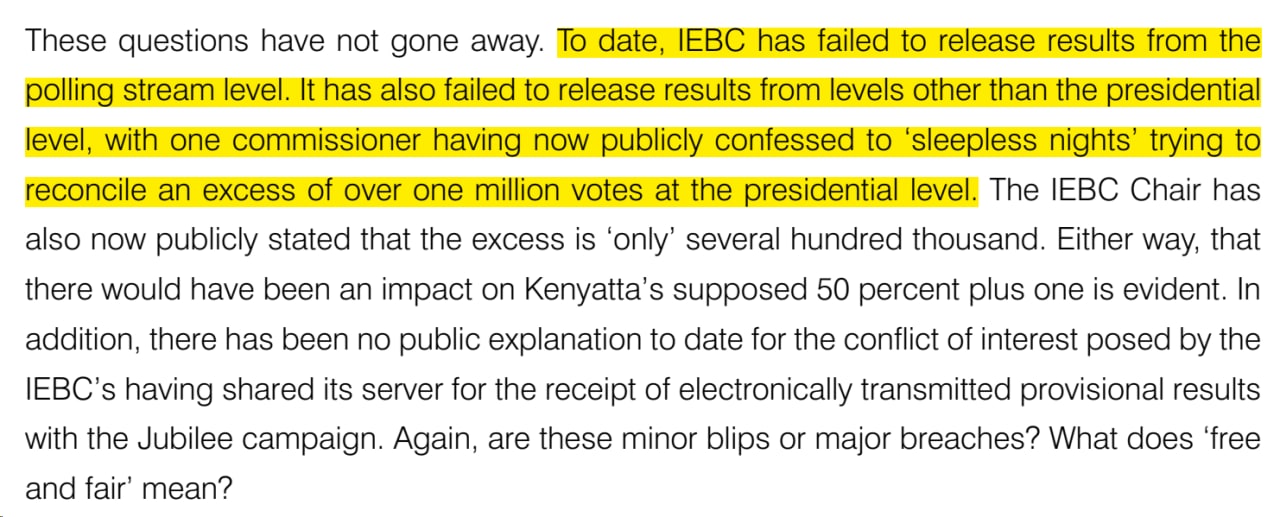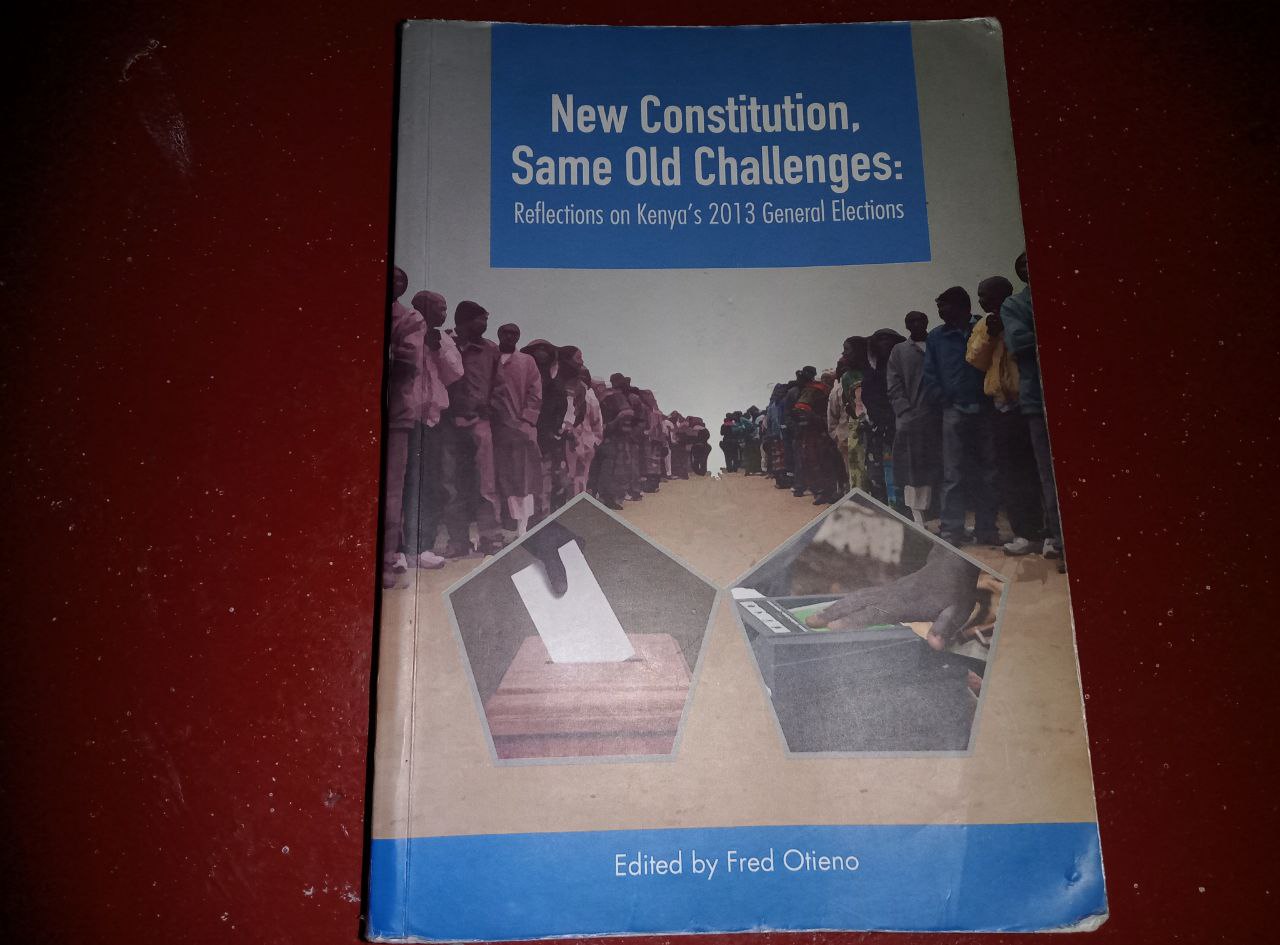I just review this old book because there’s new information concerning voters.
There’s a reason why this book is important now, read till the end and share.
A KPMG audit on the election register in 2022 showed there are 14 fake Returning Officers and 2 million fake voters.
The Independent Electoral and Boundaries Commission (IEBC) says it has solved the issue. But, not so fast.
The book, New Constitution, Same Old Challenges: Reflections on Kenya’s 2013 General Elections raised many questions about the transparency and credibility of that poll results.
The Kenyan Constitution (2010) dictates that whatever system that the Commission adopts must be simple, accurate, verifiable, secure, accountable and transparent.
In 2013, IEBC, under Isaack Hassan, could not explain where 2 million votes came from.
In the 2017 elections under IEBC Chairman Wafula Chebukati. UhuRuto lawyers were put to tasks by Supreme Court Justices Philomena Mwilu and Smokin Wanjala to explain a simple issue, ‘can people come into the polling station, pick all the six ballots, then only vote for the president? Where do the remaining ballots they were handed go?”.
Tough Question: Votes were added manually.
In 2013, Raila Odinga gave a speech, ‘Democracy was on trial in Kenya’, and moved on, little did he know that these fake voters would be used against him again in 2017.
In that 2013 election, Raila later said after the supreme court decision by CJ Willy Mutunga that “In the end, Kenyans lost their right to know what indeed happened.”
But the Urai Trust and Society for International Development (SID) sponsored this book which was written by various stakeholders and edited by Fred Otieno.
Snippets of flawed process / rigged election
The failure of Electronic Voter Identification (EVID) was planned and that’s when shit hit the fun.
‘Four voters’ register were used; the provisional one announced 18 December 2012; the electronic one assumed gazetted 24 February 2013; one listing voters without biometrics electronically posted on 2 March 2013; and the one given to political parties just prior to polling’
‘The total number of registered voters were inconsistent across all four’
Later on, Central and Rift Valley (Uhuru Kenyatta and William Ruto’s – UhuRuto strongholds) had thousands of additional voters, where Coast, Nairobi and Western (Nyanza Included) – Raila Odinga and Kalonzo Musyoka’s – Railonzo – strongholds – had reduced voter numbers in the thousands.
Analysis in the book revealed that some constituencies had two forms 36. Forms 36 is used as the final tally form after form 34. Many forms 36 went missing.
The fact is, IEBC failed to explain where over 2 million additional votes in its final tally of the presidential votes came from.
Fast forward to 2022: the Venezuelan nationals’ saga in 2022 showed that they intended to use some ghost 10,000 polling stations to inflate 120 votes translating to 1.2 million ghost votes, obviously for a man that had done it before thrice, William Samoei Ruto.

This is different from the other 2 million inserted by the fake 14 Returning Officers. So, ideally, William Ruto would have over 3.4 million fake votes added to his tally.
In 2017, Kenyans were treated to a strange phenomenon where a steady lead of 54% was added to mostly, government-sided legislators and even in the final presidential tally by the IEBC.

In the end, in 2013, Chief Justice Willy Mutunga took a shortcut, and declared illegalities and irregularities, legitimate. It was upon the Supreme Court to order IEBC to produce all forms 34 and 36 for validation. But he put this burden on the political coalition CORD. Which was wrong.
“How could missing forms 36 for about a third of all constituencies give supposedly a valid result?”, the writer in the book ponders.
His successor, David Maraga would have none of it, thanks to the flawless and hardworking arguments by the Raila Odinga and Kalonzo Musyoka legal team. The 2017 elections were declared ‘null and void’.
As we go into 2022 election, this coming Tuesday, we hope we’ve learnt the lesson and for once, those that bungle this most time-consuming and expensive process will be individually held liable and spend some time in prison.
This book, New Constitution, Same Old Challenges: Reflections on Kenya’s 2013 General Elections by Uraia Trust and Society for International Development (SID) exposed the sham election in 2013; its facts have come to light in 2022.
Raila refused to run in the second election in 2017, for good reasons.
I have a hard copy but you can download the soft copy of the book by clicking here.




